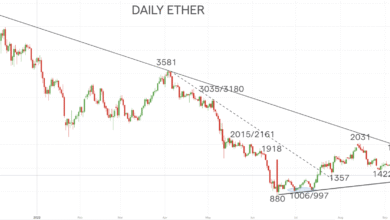Ripple RLUSD Expansion: Aiming for Europe’s Crypto Market

Ripple RLUSD Expansion is a significant move as the company aims to introduce its Ripple USD stablecoin to the European market through a newly applied Electronic Money License in Luxembourg. This strategic step comes in compliance with the EU’s Markets in Crypto Assets (MiCA) regulations, which are designed to foster safer and more robust crypto asset ecosystems. The Ripple USD (RLUSD) stablecoin is set to play a crucial role in influencing the stablecoin landscape in Europe, offering new financial opportunities for exchanges and businesses alike. With plans to ensure up to 60% of RLUSD reserves are stored in various banks, Ripple is poised to capitalize on Luxembourg’s advantageous banking infrastructure. As Ripple seeks to enhance its presence in Europe, the expansion of RLUSD could significantly impact how digital currencies operate within the region.
The Ripple RLUSD initiative marks a pivotal expansion of the Ripple USD stablecoin, targeting European markets through regulatory compliance. By obtaining a Luxembourg license, Ripple endeavors to navigate the complex landscape of cryptocurrency regulation while adhering to MiCA standards. This move to solidify their presence in Europe is poised to transform RLUSD into a cornerstone of the European digital currency framework, facilitating transactions and increasing trust among users. Moreover, by partnering with established financial institutions for custody solutions, Ripple reinforces its commitment to ensuring the stability and security of its stablecoin, promoting wider adoption and usage. As the demand for stablecoins grows, the focus on Ripple’s initiatives could significantly influence the broader stablecoin impact in Europe.
Ripple Strengthens Its Footing in Europe with RLUSD Expansion
Ripple’s strategic move to expand its RLUSD stablecoin into Europe reflects the company’s commitment to becoming a significant player in the continent’s digital financial landscape. By applying for an Electronic Money License in Luxembourg, Ripple aims to align itself with the stringent EU regulatory framework established by the Markets in Crypto Assets (MiCA) regulations. This proactive approach is crucial for enhancing the legitimacy and trustworthiness of RLUSD within the European market.
The Luxembourg license will not only facilitate Ripple’s compliance with the MiCA regulations but also allow for the seamless operation of RLUSD across the entire EU. With the financial infrastructure in Luxembourg being robust, Ripple can leverage the advantageous banking environment to ensure it meets the regulatory requirements, particularly concerning the management of reserves. This move signals Ripple’s intent to provide stability and transparency for its users, strengthening the overall impact of stablecoins in Europe.
Understanding the Impact of MiCA Regulations on Stablecoins
The Markets in Crypto Assets (MiCA) framework plays a pivotal role in shaping the future of stablecoins like Ripple’s RLUSD in Europe. The regulation aims to provide a comprehensive legal classification for crypto assets, ensuring that investors and users are protected while fostering innovation within the industry. By requiring stablecoin issuers to maintain a portion of their reserves in reputable banks, MiCA seeks to mitigate systemic risks that could affect financial stability across the EU.
For Ripple, adhering to MiCA regulations not only enhances its credibility but also opens the door for RLUSD’s integration into various financial ecosystems across member states. The guidelines set forth in MiCA can pave the way for increased user confidence and adoption of stablecoins in everyday transactions, thereby solidifying Ripple’s position as a leader in the European crypto market.
Ripple’s Luxembourg License: A Gateway to Wider Adoption of RLUSD
Acquiring a license in Luxembourg is a significant milestone for Ripple as it looks to distribute RLUSD more broadly throughout Europe. Luxembourg’s favorable regulatory environment provides a solid foundation for stablecoin operations, allowing Ripple to establish itself in a market that is rapidly evolving. With its Electronic Money License application, Ripple demonstrates its commitment to building a compliant and robust infrastructure that aligns with regional regulations.
This regulatory approval would enable Ripple to extend its services to exchanges and financial institutions throughout the EU, making RLUSD a viable option alongside more traditional financial products. The anticipated rise of RLUSD can also spur competition among stablecoin providers, thereby enhancing consumer options and potentially leading to lower transaction costs across the board.
The Role of BNY in Supporting RLUSD’s Stability
BNY Mellon, acting as the primary custodian for Ripple’s RLUSD, plays a crucial role in reinforcing the stablecoin’s reliability and trustworthiness. With its extensive experience and significant assets under custody, BNY brings a level of institutional credibility that can further attract users and investors to Ripple’s offerings. This strategic partnership is essential for building a secure foundation for RLUSD’s operations, particularly as it prepares for expansion in Europe.
Moreover, the collaboration with a well-established financial institution like BNY can help diversify the reserve management strategy of RLUSD. As stablecoin regulations evolve, having a trusted custodian ensures that Ripple can meet compliance requirements while providing the necessary security for its investors. This move is likely to enhance the overall perception of RLUSD in the competitive landscape of digital currencies.
Ripple Payments Europe SA: A Turning Point for RLUSD in the EU
The establishment of Ripple Payments Europe SA marks a significant turning point for Ripple’s operations, allowing for a localized approach to managing RLUSD transactions. This entity will facilitate better communication with European regulators, enabling Ripple to stay ahead of regulatory changes and adapt its business model accordingly. By localizing its operations, Ripple enhances its chances of successfully navigating the complexities of the European financial landscape.
Additionally, Ripple Payments Europe SA will bolster Ripple’s outreach efforts and allow for more strategic partnerships with other European financial institutions. This positioning can accelerate the adoption of RLUSD, as Ripple aims to create a more integrated and user-friendly experience for consumers across Europe. The ramifications of this move could set a precedent for how stablecoins are perceived and utilized in the European digital economy.
Luxembourg’s Banking Environment: A Boon for Ripple’s RLUSD
Luxembourg’s banking ecosystem offers unique advantages for stablecoin providers like Ripple. With a diverse array of banks capable of managing the reserves required by MiCA regulations, Ripple stands to benefit from a competitive landscape that can cater to its operational needs. The ability to choose from multiple banks for reserve management not only mitigates risks but also enhances Flexibility in financial strategies.
Furthermore, the robust financial infrastructure in Luxembourg appeals to cryptocurrency companies looking for stability and reliability. By establishing its presence in this banking-friendly environment, Ripple not only improves its chances of compliance with regional regulations but also fosters partnerships that can drive greater adoption of RLUSD across Europe.
The Future of RLUSD: Navigating the European Market
As Ripple sets its sights on the European market with the expansion of RLUSD, the implications for cryptocurrency and stablecoin adoption are profound. The EU is rapidly becoming a focal point for regulatory innovation within the crypto space, and Ripple’s efforts to become compliant under MiCA position it favorably among competitors. The potential for RLUSD to serve as a bridge between fiat currencies and digital assets is immense, especially as more users look for secure and stable options in their digital transactions.
In the coming years, the success of RLUSD in the EU will largely depend on Ripple’s ability to navigate the evolving regulatory landscape and foster trust among users. As stablecoins gain traction across various sectors, including finance, e-commerce, and remittances, Ripple’s strategic positioning will likely play a pivotal role in shaping the future trajectory of stablecoins in Europe.
Greenlighting Innovation: Ripple’s Move with RLUSD and MiCA Compliance
Ripple’s proactive approach to achieving MiCA compliance reflects its commitment to fostering innovation within the European Union. Compliance not only serves to protect consumers but also encourages the development of secure digital payment solutions that can benefit businesses and individuals alike. This initiative underlines Ripple’s recognition of the importance of adopting regulatory frameworks that support growth and stability in the crypto asset ecosystem.
By focusing on regulation and compliance, Ripple differentiates RLUSD from other stablecoins that may not have stringent oversight. This attention to compliance can enhance investor confidence and potentially draw a larger user base interested in utilizing a stablecoin backed by rigorous regulatory adherence. As the demand for compliant digital financial products rises, Ripple’s commitment to MiCA could establish RLUSD as a leading stablecoin of choice in Europe.
The Road Ahead: Ripple’s Expansion Strategy for RLUSD
Ripple’s expansion strategy for RLUSD involves a multi-faceted approach aimed at solidifying its presence within the European market. By obtaining the necessary licenses and forming strategic partnerships, Ripple is positioning itself to lead the charge in the stablecoin segment. This comprehensive strategy not only includes regulatory compliance but also hinges on fostering relationships with key institutions that can support the infrastructure required for smooth operations.
As RLUSD embarks on this European journey, Ripple emphasizes the importance of building a community of users who see value in its offerings. Educational initiatives focusing on the benefits of stablecoins and the unique features of RLUSD will be essential in raising awareness and driving adoption. By placing user experience and compliance at the forefront, Ripple aims to navigate the complexities of the crypto landscape while enhancing its competitiveness in the evolving market.
Frequently Asked Questions
What is Ripple’s plan for RLUSD Expansion in Europe?
Ripple aims to expand its RLUSD stablecoin by applying for an Electronic Money License in Luxembourg, allowing it to operate throughout the European Union (EU). This move aligns with the EU’s Markets in Crypto Assets (MiCA) regulations, enabling RLUSD to be incorporated by exchanges across Europe.
How does the Ripple Luxembourg license affect RLUSD stablecoin operations?
The Ripple Luxembourg license is crucial for RLUSD expansion as it ensures compliance with MiCA regulations. This license will facilitate Ripple’s operations with RLUSD across the EU, providing a stable regulatory framework for users and businesses.
What are the benefits of Ripple’s RLUSD stablecoin in Europe?
The introduction of Ripple’s RLUSD stablecoin in Europe offers several benefits, including improved payment solutions, compliance with MiCA regulations, and increased trust as it will be backed by significant reserves managed by established banking institutions like BNY.
What role do MiCA regulations play in Ripple’s RLUSD Expansion?
MiCA regulations play a pivotal role in Ripple’s RLUSD Expansion by providing a regulatory framework for stablecoin issuers in the EU. Compliance will enhance investor protection, stability, and integrate RLUSD into the European crypto ecosystem, fostering trust.
How does Ripple’s choice of Luxembourg benefit RLUSD’s expansion?
Choosing Luxembourg for RLUSD’s expansion benefits Ripple by providing access to a diverse banking landscape, crucial for meeting MiCA reserve requirements. This strategic location allows Ripple to utilize local banking partnerships for secure reserve management.
Can Ripple’s RLUSD stablecoin impact the European crypto market?
Yes, Ripple’s RLUSD stablecoin has the potential to significantly impact the European crypto market by offering a compliant, reliable stablecoin option. Its expansion could enhance the use of stablecoins in transactions and investments across Europe.
| Key Point | Details |
|---|---|
| Ripple’s License Application | Ripple has applied for an Electronic Money License in Luxembourg to introduce its RLUSD stablecoin across the EU. |
| Compliance with MiCA | The license is necessary for compliance with the EU’s Markets in Crypto Assets regulations. |
| Ripple Payments Europe SA | Ripple established Ripple Payments Europe SA in Luxembourg to support its license application. |
| Advantages of Luxembourg | Luxembourg has a range of banking options for stablecoin reserves, aiding compliance and operational needs. |
| Expansion Opportunities | Ripple aims to tap into significant opportunities within the European market, promoting RLUSD. |
| Custodianship with BNY | Ripple appointed BNY, a major financial institution, as the primary custodian for RLUSD backing funds. |
| National Trust Bank Charter | Ripple is pursuing a trust bank charter to enhance its operational capabilities further. |
Summary
Ripple RLUSD Expansion is a significant development in the cryptocurrency landscape, as Ripple looks to establish its stablecoin, RLUSD, in Europe by applying for a license in Luxembourg. This move not only highlights Ripple’s commitment to compliance with EU regulations but also showcases their strategic approach to leveraging Luxembourg’s banking advantages. As Ripple enhances RLUSD’s presence and credibility through institutional partnerships, the potential growth in the European market becomes increasingly promising.




